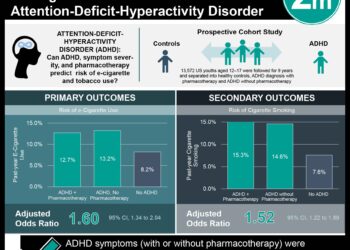Halloween and Easter associated with increased rates of anaphylaxis in Canadian pediatric patients
1. Halloween and Easter were holidays identified as having elevated risk for unknown nut and peanut triggered anaphylaxis in Canadian pediatric patients.
2. Christmas, Diwali, Chinese New Year, and Eid al-Adha were not identified as having elevated anaphylaxis cases triggered by unknown nuts, peanuts, or tree nuts.
Evidence Rating Level: 2 (Good)
Study Rundown: Anaphylaxis is a life-threatening allergic reaction involving a drop in blood pressure and constriction of the airways, impeding breathing. Most commonly, fatal anaphylactic reactions are caused by allergies to peanuts and tree nuts. Currently, there is a lack of data available on which times of the year are riskier for peanut/tree nut anaphylaxis in children, although holiday times are thought to carry higher risk. The current prospective cohort study based out of Canada assessed the risk of peanut/tree nut anaphylaxis during six celebrated holidays. Data was collected from 6 pediatric emergency wards in 4 provinces. The results of the study showed increased risk of anaphylaxis from unknown nuts and peanuts during Halloween and Easter, but now increased risk of peanut/tree nut anaphylaxis at Christmas, Diwali, Chinese New Year, and Eid al-Adha. This has implications for which holidays would be most productive in generating targeted awareness campaigns to caution parents and communities about risk of anaphylaxis. A central strength of this study was that it took into account a diverse set of holidays, ranging from celebrated secular holidays to those celebrated by specific cultural and religious groups. As well, this was a longitudinal study collecting 9 years of data. Limitations of the study included a lack of diversity in hospital sampling, since only 6 hospitals across Canada were studied, all of them being academic hospitals in urban centres.
Click to read the study in CMAJ
Relevant reading: Trends in the diagnosis and management of anaphylaxis in a tertiary care pediatric emergency department
In-depth [prospective cohort]: This study took place from April 2011 to January 2020, assessing 3214 calendar days. Comparisons were made between anaphylactic cases during each holiday period and the rest of the year, with holiday periods lasting 5 days (starting from the day before, and ending 3 days following the holiday). Only anaphylactic cases from nut allergies in patients under 18 years old were studied. Nut allergies were sorted into 3 categories: Peanuts, tree nuts, and unknown nuts, if the patient, family, or physician was unsure whether the culprit was peanuts or tree nuts. The results showed that for unknown nuts, Halloween and Easter had a 70% increase in average anaphylactic cases (incident rate ratio of 1.66, 95% CI 1.13-2.43 and IRR of 1.71, 95% CI 1.21-2.42 respectively). For peanuts, anaphylactic cases increased by 85% around Halloween (IRR 1.86, 95% CI 1.12-3.11) and by 60% around Easter (IRR 1.57, 95% CI 0.94-2.63). The remaining holidays were comparable to the rest of the year for unknown nuts and peanuts. Furthermore, there were no differences found in tree nut anaphylactic cases between holidays and the rest of the year. Overall, this study demonstrated an elevated risk for unknown nut and peanut triggered anaphylaxis during Halloween and Easter.
Image: PD
©2020 2 Minute Medicine, Inc. All rights reserved. No works may be reproduced without expressed written consent from 2 Minute Medicine, Inc. Inquire about licensing here. No article should be construed as medical advice and is not intended as such by the authors or by 2 Minute Medicine, Inc.







